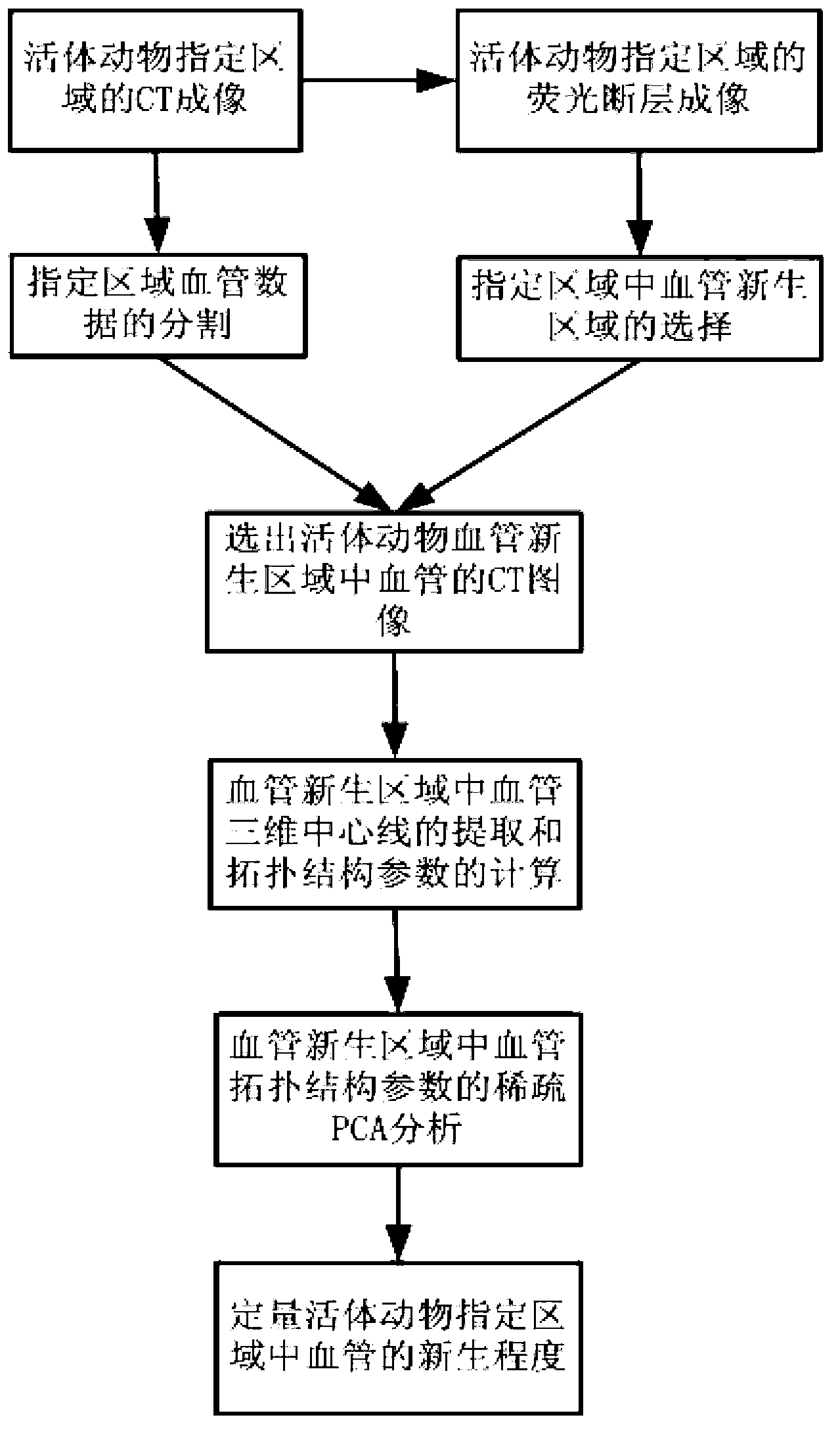Method for quantitative analysis for angiogenesis of living animals
An angiogenesis and quantitative analysis technology, applied in the field of quantitative angiogenesis in living animals, can solve the problems of not pointing out key indicators, not selecting a designated area, not analyzing the internal relationship of each parameter, etc.
- Summary
- Abstract
- Description
- Claims
- Application Information
AI Technical Summary
Problems solved by technology
Method used
Image
Examples
Embodiment Construction
[0051] Various details involved in the technical solution of the present invention will be described in detail below in conjunction with the accompanying drawings. It should be pointed out that the described embodiments are only intended to facilitate the understanding of the present invention, rather than limiting it in any way.
[0052] In this example, the angiogenesis in the lower limbs of mice was used as a quantitative object, but not limited thereto; under a stereomicroscope, the femoral artery and nerves on the inside of the lower limbs of the mice were dissected, and the femoral artery was ligated at the high position of the femoral artery; After adipose-derived mesenchymal stem cells were expanded and cultured to a sufficient number, the stem cells were injected into three adjacent positions within 1mm of the ligation site in the mouse lower limb ischemia model with a syringe.
[0053] refer to figure 1 , the present invention is based on the quantitative method of ...
PUM
 Login to View More
Login to View More Abstract
Description
Claims
Application Information
 Login to View More
Login to View More - R&D Engineer
- R&D Manager
- IP Professional
- Industry Leading Data Capabilities
- Powerful AI technology
- Patent DNA Extraction
Browse by: Latest US Patents, China's latest patents, Technical Efficacy Thesaurus, Application Domain, Technology Topic, Popular Technical Reports.
© 2024 PatSnap. All rights reserved.Legal|Privacy policy|Modern Slavery Act Transparency Statement|Sitemap|About US| Contact US: help@patsnap.com










